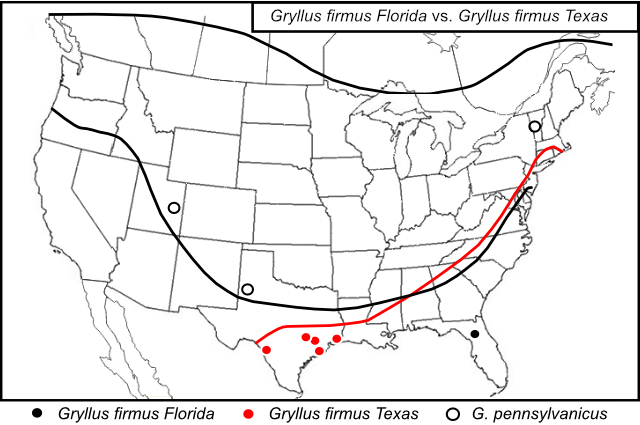


For needed background to the discussion below, see the last figure and its explanation in the Phylogeny section of the Gryllus genus page.


The chart excerpt above the map is from the Gryllus phylogeny of Gray et al. 2020. It shows the three species-level taxa that constitute the Pennsylvanicus Group of the U.S. Gryllus monograph of Weissman and Gray 2019. In this clade G. pennsylvanicus is more closely related to G. firmus *Texas than it is to G. firmus *Florida.
The clade of the Pennsylvanicus Group is of special interest because it contains two species-level taxa that must currently be assigned to Gryllus firmus Scudder 1902. The map above shows the geographic origins of the DNA used in making the phylogenetic chart of Weissman & Gray 2019. The black lines across the map show the northern and southern limits of G. pennsylvanicus as seen in the SINA map of the species. The red line across the southeastern portion of the map shows the northern limits of G. firmus as seen in the SINA map of the species. [At the northern limits of firmus it sometimes hybridizes with pennsylvanicus but there is no evidence that the barriers to introgression are weakening (see Ross & Harrison 2002 and the references that they cite).] The open circles on the map show the geographic origins of the three specimens of G. pennsylvanicus that contributed their DNA to the Weissman and Gray (2019) phylogeny. The black dot (Gainesville, Florida) and the five red dots (all from south Texas counties) show the geographic origins of the G. firmus DNA used for the W&G phylogeny.
At minimal, the above means that a new U.S. Gryllus species is recognized but not yet described.